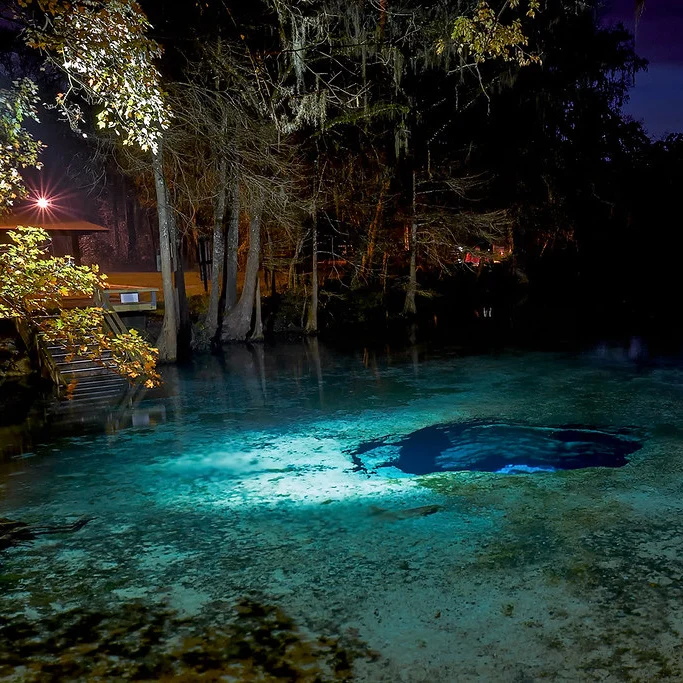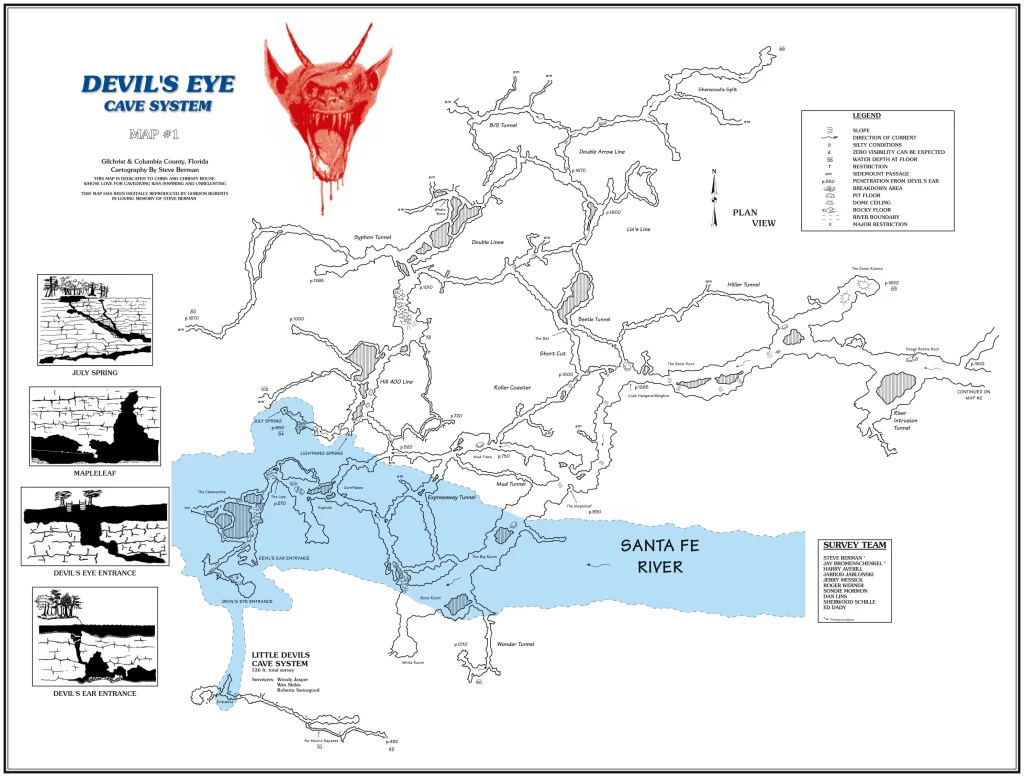Tragedy at Devil’s Eye: The Fatal Dive of Bruce Clark


| Incident Location (Country, Region, Cave) | Diver Full Names (Deceased) |
|---|---|
| United States; Florida; Devil’s Eye | Bruce Clark |
On September 4, 2009, two experienced divers, Bruce Clark (58) and Gary Hildman, entered the legendary cave system at Devil’s Eye, Florida. What was meant to be another exploration dive would soon turn into a tragedy that still lingers in the memories of the local diving community.
They carried the usual diving gear:
- Diving tanks filled and checked
- Diving masks sealed tight
- Diving suits zipped up
- Diving computers ready to track their progress
The water was calm, and visibility in the entry tunnel was good. But cave diving is never as peaceful as it looks from the surface.
Into Harry’s Crack
The two men swam together toward a section known as Hill 400 jump. From there, Bruce decided to enter a notorious passage called Harry’s Crack—a narrow, twisting tunnel with a reputation for being disorienting.
Gary hesitated. He later explained:
“I didn’t feel comfortable. There was too much silt, and I couldn’t even see the line in the tunnel.”
Instead of following, Gary waited at the junction. He expected Bruce to take a quick look and then return.
But minutes passed. Then more. The tunnel where Bruce had gone darkened as clouds of silt drifted out, making the water thick like smoke.
Waiting in the Dark
Gary’s air supply was ticking down. His diving computer warned him of the minutes slipping away. He shifted uneasily, hoping to see Bruce’s light beam pierce the cloud of silt.
Nothing.
Deciding to check from another angle, Gary swam to the Expressway side of the Crack tunnel. Still, no Bruce. The realization sank in—his partner was gone, somewhere deep in the cave.
A Desperate Search
Running low on gas, Gary made the hardest decision a diver can make: to leave a buddy behind. He surfaced and quickly found help. An instructor agreed to return with him for a search.
What followed was a 90-minute hunt through pitch-black water, weaving in and out of passages, all the while hoping Bruce was just trapped and waiting.
Finally, divers Corey and Joel located Bruce Clark’s body. It was floating near the top of the Wormhole, inside the Hill 400 tunnel—a silent end to a dive that should have been routine.
The Final Moments (Unfinished Dive)
Gary later explained that before entering Harry’s Crack, they had:
- Swum two loops up the main line
- Gone into the Expressway tunnel
- Then split at the Hill 400 jump
What happened inside Harry’s Crack after Bruce entered remains a mystery—why he didn’t return, why he lost his way, and what he might have seen in those final moments.
Theories of What Went Wrong
After the recovery of Bruce Clark’s body, divers and investigators tried to understand what had really happened inside Harry’s Crack. Since Gary had not followed Bruce in, no one witnessed the critical moments. What remains are only theories, pieced together from clues and experience.
Theory 1: Searching for a Buddy
The most popular theory is simple but haunting.
- Bruce entered Harry’s Crack and waited, expecting Gary to follow.
- When Gary never appeared, Bruce swam back out.
- By then, Gary had moved to another spot, so Bruce may have believed he was missing.
- Bruce might have begun a frantic search, burning through his diving tanks in panic.
In this version, Bruce didn’t get lost—he ran out of air looking for his partner.
Theory 2: Lost in a Silt-Out
Another possibility is even darker.
- Bruce exited the Crack but swam directly into a thick silt cloud.
- Without a clear jump line to guide him, visibility dropped to zero.
- In the confusion, he may have missed the main line, and instead of safety, swam deeper into the cave.
- Trapped and disoriented, he eventually drowned when his gas ran out.
This theory suggests that in the deadly maze of Devil’s Eye, even small mistakes—like not laying a jump line—can spiral into disaster.
A Lesson in Planning and Gear
Experienced cave divers know the rule: always run a line when entering a side passage. That line is your lifeline when silt kicks up and vision disappears.
If Bruce had tied in a jump line before entering Harry’s Crack:
- Gary might have felt confident enough to follow.
- They both would have had a guaranteed path out.
- The chance of becoming disoriented would have been almost zero.
The absence of this simple step points to bad planning rather than bad luck. Even with good diving gear, diving mask, diving suit, and diving computer, survival depends on procedure, not equipment alone.
The Haunting Silence of Hill 400
What makes this case chilling is how ordinary it seemed at first. Bruce and Gary did not push extreme limits. They weren’t exploring a new passage. They were simply following known lines in a well-traveled system.
But in cave diving, the line between control and catastrophe is razor thin. One missing jump line, one cloud of silt, one diver’s hesitation—and suddenly, the water keeps one of them forever.

